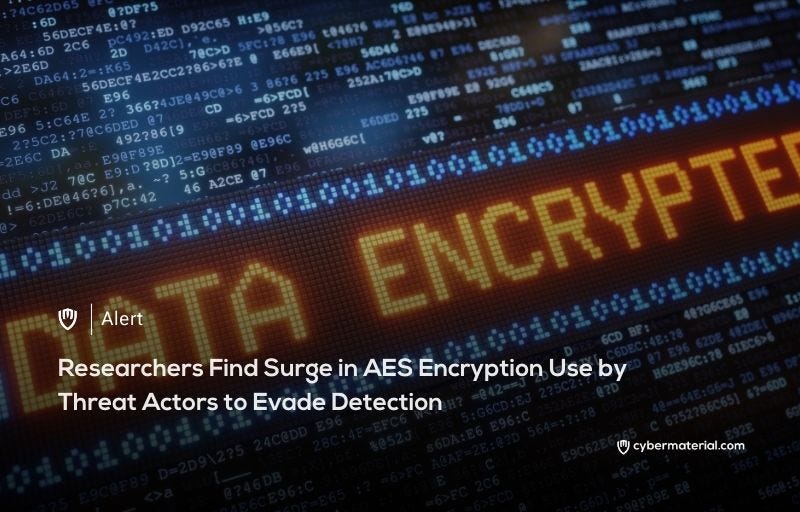
Cybersecurity researchers have uncovered an alarming increase in the use of AES (Advanced Encryption Standard) encryption by threat actors, who employ it to conceal malicious payloads and evade detection. This encryption method, when combined with other advanced techniques like code virtualization and staged payload delivery, is being adopted by malware families such as Agent Tesla, XWorm, and FormBook/XLoader to bypass traditional static analysis tools and sandbox environments. These multi-layered evasion tactics significantly complicate the detection process, as they allow the malicious payloads to remain hidden during the analysis and prevent security tools from identifying their presence. This trend underscores the growing sophistication of cybercriminal operations and highlights the need for security solutions to evolve in response.
AES encryption plays a pivotal role in these advanced malware campaigns.
As a symmetric block cipher, AES transforms plaintext into ciphertext through several rounds of substitution and permutation. In the observed attacks, AES operates in Cipher Block Chaining (CBC) mode, ensuring that each block of plaintext is encrypted with a unique initialization vector (IV), making decryption efforts far more difficult. The encrypted payloads are typically embedded within the Portable Executable (PE) overlay, a part of the file that is often overlooked by conventional static analysis tools. To further complicate detection, the cryptographic parameters—such as the AES key and IV—are hidden within the overlay, padded with arbitrary data to avoid signature-based detection mechanisms.
Once the payload is decrypted, the malware proceeds to the next phase of its evasion strategy: code virtualization.
This technique, facilitated by tools like KoiVM, transforms the malware’s standard code into a proprietary intermediate language that can only be executed by a custom virtual machine (VM). The VM’s dispatcher routes the instructions to specialized handlers, making reverse engineering of the malware extremely challenging. As a result, even if analysts manage to analyze the decrypted payload, the use of a custom VM makes it almost impossible to reconstruct the original malicious code. The second-stage payload acts as a dropper, loading the final malicious code directly into memory and bypassing traditional file-based detection methods entirely.
The final stage of this multi-layered attack is the execution of the payload in memory, which allows the malware to bypass the common file-scanning methods used by most security tools. Once the payload is loaded into memory, it can begin executing its harmful actions without ever being written to disk, avoiding detection by conventional antivirus software. In some cases, malware families like XWorm go further by encrypting their configuration data with AES in Electronic Codebook (ECB) mode, adding another layer of encryption to prevent analysis. The use of these multi-staged techniques, such as .NET reflection to manipulate objects at runtime, further complicates traditional detection approaches. This evolution in malware techniques requires a shift in how cybersecurity solutions approach threat detection, emphasizing the importance of behavioral analytics and machine learning to spot anomalies during runtime. By focusing on the execution and behavior of malware in real-time, security vendors can more effectively counter these complex attacks before they can cause significant damage.
Reference:
The post AES Encryption Shields Malicious Payloads first appeared on CyberMaterial.


